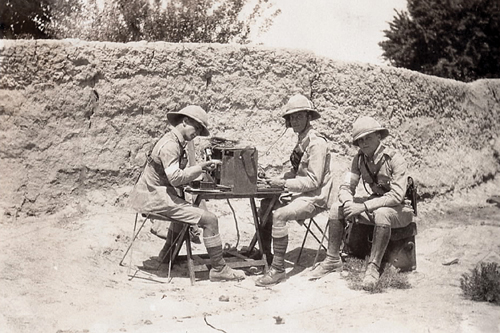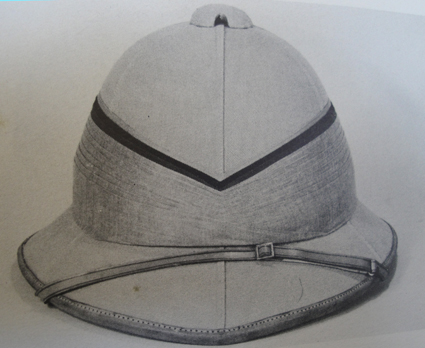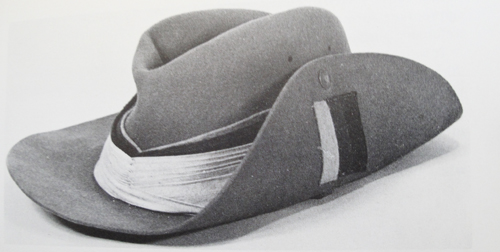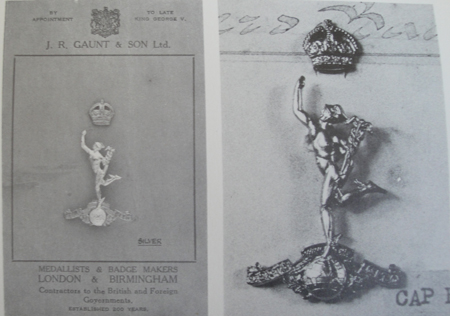The Royal Corps of Signals was formed in 1920 however prior to that date the Royal Engineers provided a communications system during the Crimean War and the Abyssinian War of 1867 brought further active experience for the telegraphists and signalers of the Royal Engineers. 1
Note the white/blue armband worn by the signalers in the above photograph.
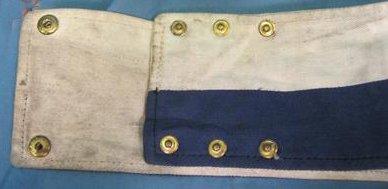
An example of a WWII armband illustrating the method of adjusting to fit different arm sizes. (Courtesy Stewart’s Militaria)
In 1870, C Telegraph Troop RE was formed and saw active service in the Ashanti Campaign of 1873 and the Zulu War of 1879. In 1884 C Troop and the Postal Telegraph Companies were amalgamated to form the 1st and 2nd Divisions of the Telegraph Battalion RE. 2
In foreign service stations during the period 1920-1924 a flash of white/blue, approximately 2 or 3 inches square was worn on the sola topi, with white to the front and sewn onto the puggaree. 3
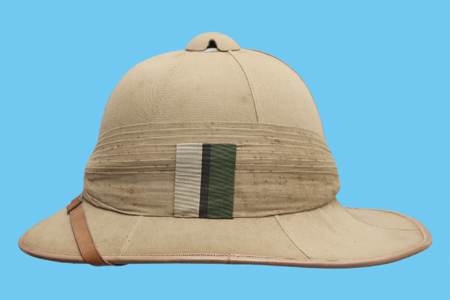
A Wolseley helmet with the RCS flash of light blue/dark blue/green c1934. (Collection of Stuart Bates)
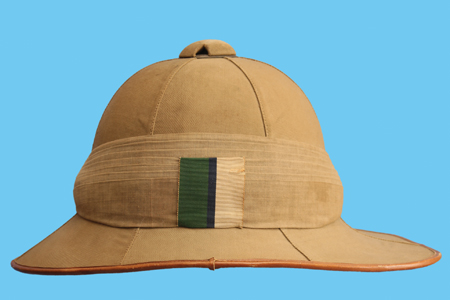
A Wolseley helmet with the RCS flash of light blue/dark blue/green c1934. Note that the flash is reversed. (Collection of Stuart Bates)
The flash was again changed in 1934 and the colours were worn vertically light blue to the front. 4
In 1937 the flash was discontinued and replaced by piping in the Corps colours with light blue to the top. 5
The slouch, which was worn during the Second World War, was brought back into service, under authority of ACI 868 of 1950. These were worn either with piping or with a plain khaki puggaree. The standard pattern Royal Signals cap badge was worn centrally on the flash. 6
The standard cap badge shown above was approved in 1946. 7
Stuart Bates
- Harfield, A.G., Headdress, Badges and embellishments of the Royal Corps of Signals
- Ibid
- Ibid
- Ibid
- Ibid
- Ibid
- Ibid
All photos not otherwise attributed from the above book by Major Harfield.

